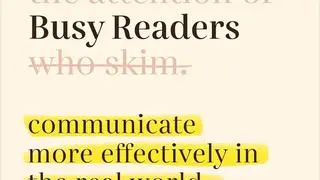Sridhar Krishnaswami
No one is under any illusion and nothing comes as a surprise anymore in the realm of international affairs when it comes to India and China. Gone are the days of simple characterisations of bilateral relations or for a continual blame game on political leaders of the present to what happened some six or seven decades ago. Whether it is East Asia, South Asia or the Indo Pacific, by and large there is a realisation that the two giants India and China are going to be major players, at times even at cross purposes, for the simple reason that each is going to be weighed down only by its own national interests.
Even if Beyond Binaries starts with 2008, Shastri Ramachandaran has done a fine job weaving the disparate elements of geography, culture, civilization, economics and geo-politics to explain why New Delhi and Beijing do what they do or why at times are pulled in different directions, some of which end up in confrontations. At the same time, as Ramachandaran carefully tries to explain, there is more to India-China relations than explained away as an either-or choice. As Shyam Saran, the former Foreign Secretary of India, puts it in the foreword, “These are civilizational states and history and tradition continue to provide the prism through which they perceive and interact with the world around them, shaping it in ways that are not yet clear.”
On the face if it, the strength of the book would seem to come from the fashion in which the author has sought to keep attention of the reader focusing on the way India and China were; cooperation and conflict; Asian giants at play; China on the global stage; the differences between the Indian and Chinese media and well as the role of China’s media, the state and think tanks as they went about defining the respective agendas. In fact, the real source of interest in reading comes from Ramachandaran’s unique position as a journalist with wide experience not only in India but one who has also seen the “other” side intimately by being in various senior positions in Chinese media outlets and publications.
Multi-dimensional perspectives
The ability to present different explanations as opposed to routine references of “aggression” runs through this work. In other words Ramachandaran makes the reader think as to where China is “coming from” instead of mechanically looking at a uni-dimensional perspective. In fact, several academics and journalists routinely posit the view that New Delhi “still” has not learnt anything from the so-called two-faced Chinese behaviours of the 1950s leading to the 1962 debacle and war. But as the author so eloquently points out at different times, there could be several factors at work instead of routine looking at China grabbing more land.
The case in point that Ramachandaran explains, for instance, has to do with the crisis at Doklam in 2017 followed by a bloody confrontation at the Galwan Valley in 2020 with many on the outside still searching for definitive answers on what propelled Beijing to embark on such actions.
On the Galwan clashes the author raises several interesting observations as to what factors may have contributed to China’s military provocation. It could have been because of India’s deepening ties with the US, role in the Quad, opposition to the Belt and Road Initiative or its ambitions for supremacy in Asia; or all of these. “More than any or all of these, China’s provocative military attack could well have been to establish deterrence against India. This is a possible, and plausible, reason,” the author observes.
Emerging world order
The book has also to be seen in the context of the recent churning in the international system where India and China have been forced to take on different roles in the emerging world order. The diplomatic and military flexing of the muscles in Africa and South Pacific aside, Beijing has raised some eyebrows in its contacts with the Hamas leadership even while consistently calling for a ceasefire in the Gaza conflict. Certainly it does not mean that China is trying to rub shoulders with a perceived terrorist entity but perhaps more reflective of a keen interest in the affairs of the Middle East. Russia’s two years plus war in the Ukraine have pulled Moscow and Beijing together, but Xi Jinping has been measured in his dealings with Vladimir Putin.
By the same token, India’s rising profile in the Indo-Pacific, including its strident calls for observance of maritime laws in the disputed South China Seas, has undoubtedly rankled the Chinese leadership. The bottom line as Ramachandaran would allude to: India-China differences transcend bilateral issues and not necessarily in an either-or proposition. In a relationship where bear hugs and extended handshakes have rarely been defining moments or diplomatic indicators for future, perhaps increased economic cooperation, in spite of the lop-sided current gap in China’s favour, may be the one way out as the two countries try to define the 21st Asian Century.
Beyond Binaries is a welcome addition to the repertoire on India-China literature.
(The reviewer is a senior journalist having been in Washington DC for 14 years covering North America and the United States; and in academics as Professor of Journalism and Deputy Dean in the College of Science and Humanities, SRMIST)
https://www.amazon.in/Beyond-Binaries-World-India-2008-2022/dp/9391659373







